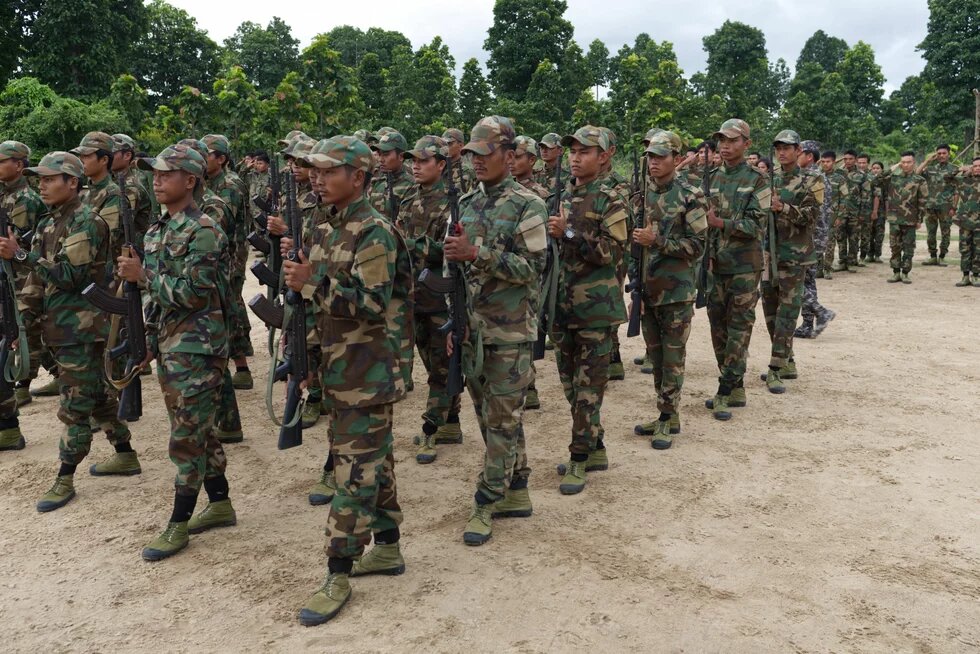After the coup in Myanmar, the military junta has conscripted men as soldiers, while resistance forces also reproduce the same violent masculinity they claim to fight. Even in areas liberated from military rule, women suffer most from displacement and sexual violence. Trapped between militarized power and unseen oppression, men struggle with trauma, fail their traditional provider roles, and are forced to replicate the unjustness they once resisted.

Myanmar has been facing a dreadful political situation including armed conflicts and human rights violations since a military coup in 2021. This coup d'etat exacerbated the over seven-decade long entrenchment of armed conflicts in the northern part of the country. In a wave of new clashes, Sagaing, Magway, Tanintharyi, and Chin State have emerged as new battlegrounds. Due to the coup and the fights in the country, over 3.5 million people have been displaced internally and over 200,000 people fled the country joining 1.3 million people from Myanmar who were forced to flee the country were already forced to flee before the 2021 coup until the end of 2024.
The armed conflicts in Myanmar reinforce a paradoxical form of manhood that constructs men as oppressors who exert dominance and (violent) control, yet also as ones being oppressed, and trapped in a cycle of violence and emotional suppression. What is more, using an intersectional lens, class and ethnic differences also have to be taken into account. For instance, even though men in Myanmar culturally hold higher position than women, a wealthy urban ethnic Bamar woman may have more land access and influence than a displaced ethnic minority man from a conflict-affected area.1
Countless young men have become trapped in a cycle of violence and trauma.
Amidst the political and armed conflicts, the military regime enforced a conscription law in 2024 that primarily targets young boys and men from all walks of life, especially from poor households. Many have been snatched from their homes, forcibly enlisted, or taken from the streets. Even with Ethnic Armed Organizations (EAOs), the practice of forced recruitments was revealed and brought to international light through documented reports. This involves imposing quotas on villages or households to supply a required number of recruits, either boys or girls, and families with more daughters than sons will most often send their girls to serve. Many members of the ethnic minority of the Rohingya, already vulnerable because of their lack of citizenship rights and statelessness, have been abducted and conscripted to battle various opposition armed groups. It has also been reported that without knowing whether the conscripted men received any training, many feared they could potentially be used as human shields sent ahead to clear mines or shield soldiers from gunfire, with no regard for their lives. As a result, countless young men have become trapped in a cycle of violence and trauma, while others have lost their lives. The enforced conscription policy has also pushed poor families into debt traps, as they are forced to pay bribes ranging from 2 million to 5 million Myanmar Kyats (USD 953 to 2,380) to keep their sons from forced enlistment.
According to a small-scale study by Legal Aspect for Myanmar People (LAMP) on the conflict in Sagaing Region, 2 men are disproportionately targeted by the military junta as suspected members of the People’s Defense Forces (PDF), subjecting them to high risks of being arrested, tortured, or killed. Formed in response to the 2021 coup, the People’s Defense Force (PDF) is a citizen militia collaborating with other resistance armed groups to fight against the military junta and protect liberated territories. Therefore, men were forced to abandon and flee their homes and villages. This forced displacement of men has created devastating ripple effects. With male family members forced to flee, women became the sole caretakers of children and elderly while attempting to hide from military raids – but when the villages were burned, they had to take both with them and flee their homes, and without access to medical care, many elders died on the run. This gendered crisis of survival in forced displacement has fractured family structures and undermined the men’s abilities to meet gender expectations as protectors and breadwinners (Naujoks & Ko, 2018), with such struggles often resulting in mental health challenges, such as depression and suicidal thoughts.
Sexual and gender-based violence is a frequent weapon of torture.
In Myanmar's revolution, the broader fight for national freedom is inextricably linked to the struggle for gender equality, a connection strengthened by the gender-supportive discourses and values promoted by revolutionary groups. Following the brutal suppression of the 2021 military coup, many women and marginalized genders joined the PDFs, with their unprecedented visibility and leadership reflecting the growth of gender-supportive norms over the past decade. However, militarized masculinity is also found within the PDFs, though it is less prevalent than in the military junta. Sexual and gender-based violence is a frequent weapon of torture used by the Burmese military towards women and girls, especially in conflict zones. According to the research finding of the LAMP study, not only junta military forces, but also resistance groups have committed such acts. The democratic National Unity Government (NUG) has adopted a policy that forbids sexual harassment, exploitation and abuse (PSHEA) to protect women, youths, children and gender minorities; however, in some places that are under the control of revolutionary forces, the problems are not addressed and the victims are still not getting justice because perpetrators have not been punished effectively. This violence reflects harmful violent masculinity – where sexual and gender-based violence are being used to terrorize and dominate vulnerable groups. Meanwhile, some members of revolutionary forces paradoxically reinforce the same concept of harmful masculinity they used to oppose while they are committing the same violent patterns.
The conflict in Myanmar discloses a paradox of masculinity as both the weapon and the wound as men are simultaneously perpetrators and victims of harmful gender norms. The hegemonic masculinity ideal is being wielded as a weapon – conscripting men as disposable combatants while dominating women and marginalized groups and emasculated other men with sexual and gender-based violence. At the same time, this hegemonic ideal carries multiple burdens for men as they are forced into roles that face insecurity, trauma and displacement while failing to fulfill their masculine norms as protectors and providers. Between power and oppression, masculinity in Myanmar remains a trap – where the oppressed are becoming oppressors, and liberation remains illusory. Thus, revolution is not only fighting against an oppressive junta but also against violent ideas of masculinity, paving a path for change to the better and more equality.

